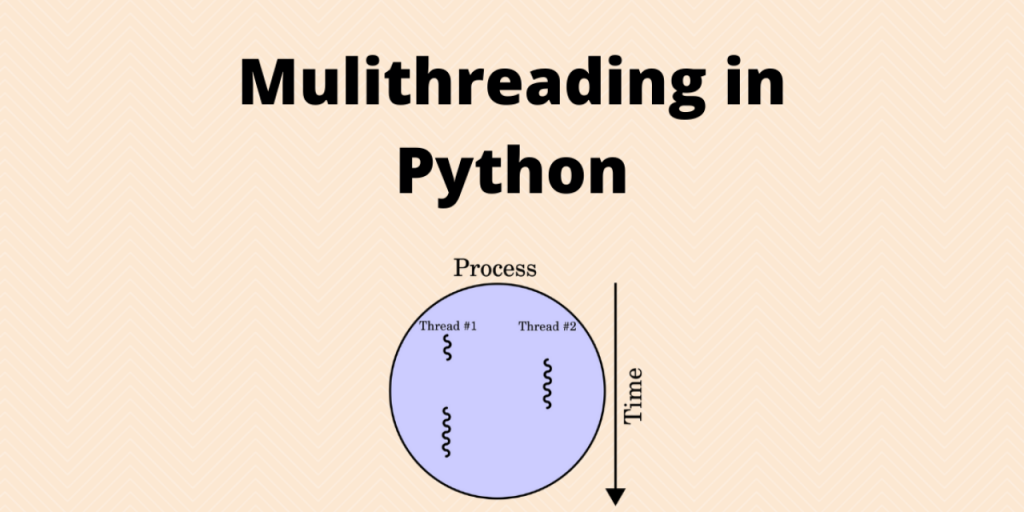Python多线程编程安全实践:可变数据结构的应用与注意事项


1. Python多线程编程概述
Python多线程编程是提升程序并发性能和响应速度的重要技术之一。在多核处理器日益普及的今天,能够有效地利用多线程,对于设计高性能、高可用性的系统来说至关重要。
在本章中,我们将首先回顾Python的线程模型和线程的基本概念,然后探讨Python多线程编程的主要应用场景和优势。接着我们会介绍Python线程库中的关键组件,例如threading模块,并简要讨论线程和进程之间的差异。通过本章的学习,读者将获得一个关于Python多线程编程的全局视野。
- import threading
- def print_numbers():
- for i in range(1, 6):
- print(i)
- # 创建线程
- thread = threading.Thread(target=print_numbers)
- thread.start()
- thread.join()
在上述简单的多线程示例中,我们定义了一个函数print_numbers,它会依次打印1到5。我们通过threading.Thread创建了一个线程对象,并将目标函数print_numbers传递给它。调用start()方法后,线程开始执行,join()方法则确保主线程等待该线程结束后再继续执行。
接下来的章节将深入探讨多线程编程的多个方面,包括线程安全、同步机制以及性能优化等关键主题。
2. 线程安全的可变数据结构理论
2.1 多线程编程中的数据竞争问题
2.1.1 理解数据竞争和临界区
在多线程编程中,当多个线程同时访问同一数据资源,且至少有一个线程在进行写操作时,就可能会出现数据竞争的问题。这种现象往往会导致不可预料的结果,因为线程执行的顺序是不可预测的。
为了解决数据竞争问题,必须识别和定义程序中的临界区(Critical Section)。临界区是指访问共享资源的代码片段,此段代码在同一时刻只能被一个线程执行。若多个线程试图进入同一个临界区,需要使用同步机制来确保它们以某种顺序执行。
2.1.2 竞态条件的影响
竞态条件(Race Condition)是指多个线程同时操作共享数据,导致最终结果不确定的现象。这种问题可能不会立即出现,但会随着程序的运行,依赖于线程的调度顺序和时间差异,使得程序行为变得不可预测。
为了检测和避免竞态条件,我们可以设计测试用例来模拟不同线程的执行顺序,或者通过同步机制确保对共享数据的操作是原子性的,即整个操作过程无法被其他线程打断。
2.2 同步机制的基本原理
2.2.1 锁的概念和分类
锁是一种同步机制,用来控制多个线程访问共享资源的顺序。最基本的锁是互斥锁(Mutex),它有两种状态:上锁(Locked)和解锁(Unlocked)。当一个线程获得锁时,它将锁置于上锁状态,其他线程如果尝试获取同一个锁,将会被阻塞,直到锁被释放。
除了互斥锁,还有读写锁(Read-Write Lock),这种锁允许多个线程同时进行读操作,但写操作必须独占锁。读写锁适合于读多写少的场景,能够有效提高程序的并发性能。
2.2.2 条件变量和事件机制
条件变量(Condition Variable)与锁配合使用,允许线程在某些条件不满足时挂起执行,直到其他线程修改了条件,并通知条件变量,从而唤醒等待的线程。
事件机制(Event)是一种更高级的同步机制,允许线程设置某个事件状态,并等待其他线程改变这一状态。事件通常用来实现线程间的简单同步,但使用不当可能会导致死锁。
2.3 可变数据结构的选择
2.3.1 标准库中的线程安全数据结构
Python的queue模块提供了几种线程安全的队列实现,比如Queue、LifoQueue和PriorityQueue。这些队列类内部使用了锁机制,因此可以安全地在多线程环境中使用,无需担心数据竞争问题。
- import queue
- q = queue.Queue()
- # 生产者线程
- def producer():
- for i in range(10):
- q.put(i) # 线程安全地放入数据
- # 消费者线程
- def consumer():
- while not q.empty():
- item = q.get() # 线程安全地取出数据
- # 创建线程并执行
- # ...
在上述代码中,q.put() 和 q.get() 操作都是线程安全的,因为队列内部管理了必要的锁。
2.3.2 第三方库提供的选择
除了Python标准库,还有第三方库提供了额外的线程安全数据结构,例如multiprocessing模块中的Manager类,可以用来创建可以被多个进程共享的复杂数据类型,如列表、字典等。
- from multiprocessing import Manager
- # 使用Manager创建一个可被多个进程共享的列表
- manager = Manager()
- shared_list = manager.list()
- # 在多进程中使用shared_list
- def worker(num, shared_list):
- shared_list.append(num)
- # 启动多个进程
- # ...
此类数据结构在多个进程间共享数据时非常有用,但需要注意的是,网络延迟和数据复制可能会造成性能开销。
在下一章节中,我们将深入探讨线程安全的可变数据结构实践,结合具体的代码实例,展示如何在Python中使用这些数据结构来解决实际问题。
3. ```
第三章:线程安全的可变数据结构实践
3.1 使用线程安全的队列
3.1.1 Queue模块的使用方法
Python的Queue模块提供了线程安全的队列实现,这对于多线程编程来说非常有用,尤其是当你需要在多个线程之间传递信息时。队列模块提供了Queue类,它实现了锁原语的锁定和解锁,确保任何时候只有一个线程可以修改队列。
让我们来看一个简单的使用Queue模块的例子:
在上面的例子中,我们创建了一个生产者和一个消费者。生产者将数据项逐个添加到队列中,而消费者则从队列中取出数据项并处理。通过使用Queue模块,我们可以确保数据在多个线程间安全地传递,无需担心数据竞争和同步问题。
3.1.2 实际案例分析
想象一个简单的生产者-消费者问题,其中生产者生成数据并将它们放入一个共享队列中,消费者从队列中取出并处理这些数据。如果没有线程安全的数据结构,多个生产者线程或消费者线程同时访问队列可能会导致数据损坏。
以下是Queue模块如何解决这一问题的一个实际案例:
在这个案例中,我们使用了两个生产者和两个消费者,它们都访问同一个队列。通过在队列中放置None作为停止信号,我们可以安全地通知所有消费者停止工作。使用Queue模块,我们无需手动管理锁或同步,这使得代码更加简洁和易于维护。
3.2 使用线程安全的集合
3.2.1 threading模块的Lock和RLock使用
在Python的threading模块中,Lock是一个基本的同步原语,用于保证当一个线程在执行一个函数或代码块时,没有其他线程可以同时执行它。RLock(可重入锁)是Lock的一个变体,它允许同一个线程多次获取锁。
以下是使用RLock的一个基本例子:
- import threading


















